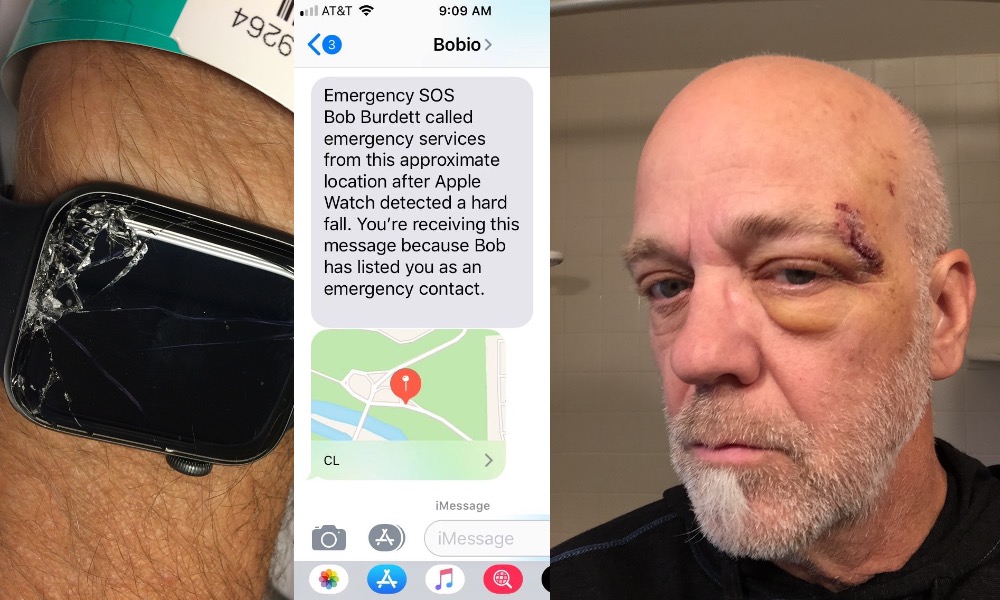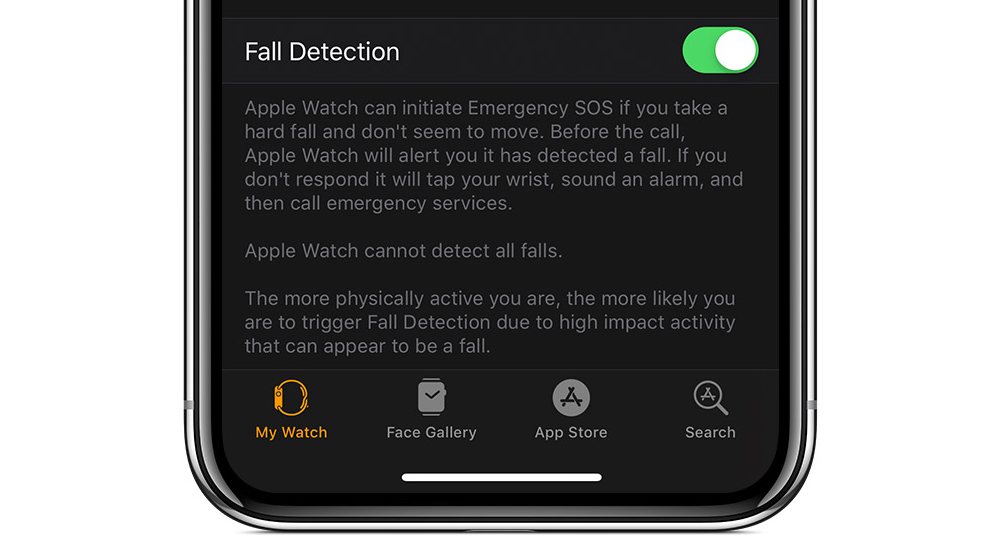This Man Was Picked up by Paramedics While Still Unconscious Thanks to His Apple Watch
 Credit: Gabe Burdett / Facebook
Credit: Gabe Burdett / Facebook
Toggle Dark Mode
We’ve heard lots of stories over the past few years of Apple Watches saving lives, and the occasions where the Apple Watch has helped out have only increased since last year’s release of the Apple Watch Series 4 with the new fall detection and advanced heart monitoring features.
Now, a new story shared on Facebook on Friday is one of the most amazing cases we’ve heard, telling how a man’s Apple Watch actually got him to the hospital before he had even regained consciousness.
The story, which has now gone viral and been shared almost 500,000 times, makes for a compelling reason for just about anybody with an active lifestyle to buy an Apple Watch Series 4 or Series 5 — and why everybody who does have a recent model Apple Watch should seriously consider enabling the feature.
The author of the post, Gabe Burdett, shares how he was on his way to meet his father, Bob, to go mountain biking last weekend in Riverside State Park when he received a notification that his dad’s Apple Watch had detected a hard fall, along with a map to his current location.
Gabe was naturally concerned and drove directly to the specified location, only to discover that he father wasn’t there by the time he arrived. Instead, however, as Gabe soon discovered as a result of a subsequent automated notification from his father’s Apple Watch, Bob had already been taken to a local hospital.
It turned out that what had in fact happened was that Bob had flipped his bike, hit his head, and was actually knocked unconscious. However, his Apple Watch went straight to work, calling 911 with his location and announcing that he had taken a hard fall. As a result, paramedics quickly arrived and were able to take him to the hospital within a half an hour, even though he didn’t regain consciousness until sometime during the ambulance ride.
Even then, however, the Apple Watch hadn’t stopped doing its job, and continued sending subsequent notifications to Gabe, as Bob’s emergency contact, to update him as Bob’s location changed. This allowed Gabe to know where his dad had been taken so he could meet him at the hospital. In fact, Gabe notes that his brother was driving right by the hospital in question to when the second update came in, and so was able to visit their father almost immediately.
Bob Burdett is reportedly “doing great” with no problems found on either his X-rays or CT scan, but Gabe notes that it’s entirely possible that nobody would have found his father in time had it not been for the Apple Watch, adding that it’s “amazing technology” and encouraging everybody who owns an Apple Watch that supports it to be sure to enable the fall detection feature, and if you’re using an older watch and have been on the fence about upgrading to the new Apple Watch Series 5, this may be another really great reason to do so.
How to Enable Fall Detection on Apple Watch
Fall detection is available on the Apple Watch Series 4 or Series 5, however even on Apple’s latest model, the feature is still only enabled if the owner is 65 years of age or older, based on the birthdate entered into the Health app during set up. However, it’s easily switched on with a quick trip into your the Apple Watch settings. Here’s how to make sure it’s enabled from your iPhone:
- Open the Apple Watch app on your paired iPhone
- Ensure the My Watch tab is selected from the bottom
- Scroll down to Emergency SOS and tap it.
- Look for the Fall Detection setting and ensure it’s switched on.
The setting can also be found directly in the Settings app on the Apple Watch in watchOS 6, under the SOS section.
Apple leaves the setting off for those under age 65 by default due to the possibility that it could be inadvertently triggered by high-impact workout activities. However, since the fall detection feature sounds an audible alert for 60 seconds before actually calling emergency services, giving you ample opportunity to cancel the call, there’s little risk from turning it on beyond a minor inconvenience, so we think this is more a case of Apple wanting to make sure users know what they’re in for once the feature is switched on.







